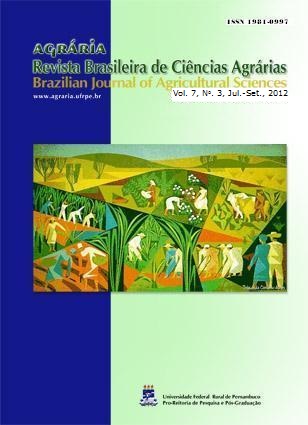Comparison of different methods to evaluate mechanical damages to seeds in two soybean cultivars
DOI:
https://doi.org/10.5039/agraria.v7i3a1075Keywords:
Glycine max, sodium hypochlorite, X-rays, tetrazolium testAbstract
The goal of this research was to verify the occurrence of mechanical damages in soybean seeds harvested with different levels of moisture content, and to compare the use efficiency of X-ray, sodium hypochlorite and tetrazolium tests to detect the occurrence of mechanical damages in these seeds. The soybean seeds were obtained from cultivars Embrapa 48 and FTS Águia, which have differences in seed coat lignin content, harvested by hand and mechanically with moisture contents of 18%, 15% and 12%. After harvesting, moisture content of seeds was determined, and seeds were dried until 11% moisture content before the tests of germination, tetrazolium (mechanical damages), sodium hypochlorite and X-rays. After the tests, seeds were kept in storage conditions at 20 °C and 45% relative humidity (RU) and analyzed after six months. The results indicated that the use of X-rays allows the identification of mechanical damages with immediate effects in the soybean seeds, cultivars Embrapa 48 and FTS Águia. X-rays, sodium hypochlorite and tetrazolium tests, utilized together, evaluated with efficiency mechanical damages of the soybean seeds under study.



